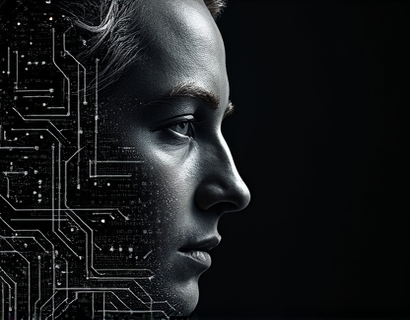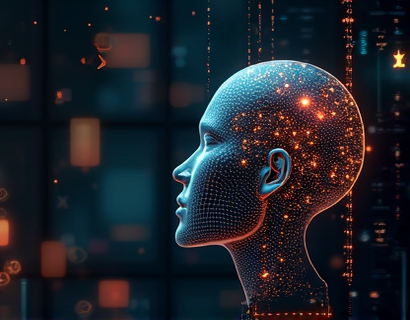Transforming Access to Architecture Knowledge with AI-Powered Chat Interfaces
The integration of AI technology into the realm of architecture is revolutionizing how knowledge is accessed and shared. An AI-powered chat interface is emerging as a pivotal tool, offering expert insights and specialized information to users across various levels of expertise. This innovative approach not only democratizes access to architectural knowledge but also ensures a safe and educational environment for users of all ages. The focus on accuracy and reliability makes it an invaluable resource for both learning and professional development in the field of architecture.
Enhancing Educational Experiences
The traditional methods of learning architecture can be daunting, often requiring extensive research and access to specialized resources. An AI-powered chat interface changes this landscape by providing immediate, accurate, and relevant information. For students and educators, this means a more interactive and engaging learning experience. The chat interface can answer complex questions, explain intricate concepts, and offer detailed explanations of architectural principles and practices. This real-time interaction fosters a deeper understanding and retention of knowledge.
Specialized Information at Finger Tips
The architecture industry is vast and multifaceted, encompassing areas such as sustainable design, urban planning, historical preservation, and more. An AI chat interface can categorize and provide specialized information on these topics, ensuring users receive precise and up-to-date content. Whether it's understanding the latest trends in green building or exploring the historical context of a particular architectural style, the chat interface serves as a comprehensive resource. This level of specialization is crucial for professionals seeking to stay current and for students aiming to excel in their studies.
Ensuring Safety and Accessibility
One of the most significant advantages of an AI-powered chat interface is its commitment to safety and accessibility. Content is rigorously verified to ensure accuracy and reliability, making it a trustworthy source for information. For educational settings, this means teachers can confidently direct students to the chat interface for research and learning. Additionally, the interface is designed to be child-friendly and suitable for students of all ages, adhering to strict safety standards and guidelines. This ensures that young learners can explore architectural concepts without encountering inappropriate or harmful content.
Promoting Professional Growth
For professionals in the architecture field, an AI chat interface offers a continuous learning platform. It can provide insights into the latest industry trends, emerging technologies, and best practices. Architects can use the chat to refine their skills, seek advice on complex projects, and stay informed about regulatory changes and standards. The interactive nature of the chat allows for personalized learning paths, catering to the specific needs and interests of each user. This ongoing education is vital for maintaining a competitive edge in a rapidly evolving industry.
User-Friendly Interaction
The design of the AI chat interface prioritizes user experience, making it intuitive and easy to navigate. Users can engage in natural language conversations, asking questions and receiving detailed responses without the need for technical expertise. This accessibility encourages broader participation, from novice learners to seasoned professionals. The chat interface can handle a wide range of queries, from basic questions about architectural elements to in-depth discussions on design theories and methodologies. This versatility ensures that users of all backgrounds can benefit from the platform.
Content Verification and Quality Assurance
A critical component of the AI chat interface is its content verification process. All information provided is cross-referenced with credible sources to ensure its accuracy and relevance. This rigorous quality control measures help maintain the integrity of the platform, making it a reliable resource for users. The verification process includes checking against industry standards, academic research, and expert opinions, ensuring that the content is not only accurate but also up-to-date with the latest developments in the field.
Child and Student-Friendly Features
Recognizing the importance of early education in architecture, the chat interface includes features specifically designed for children and students. These features ensure that the content is presented in an engaging and understandable manner. Visual aids, simplified explanations, and interactive elements make complex concepts more accessible. The interface can also adapt to different age groups, providing age-appropriate content and learning paths. This approach not only makes learning enjoyable but also lays a strong foundation for future studies and careers in architecture.
Building a Community of Learners
The AI chat interface fosters a community of learners and professionals, creating a collaborative environment for knowledge sharing. Users can ask questions, share insights, and engage in discussions, forming a supportive network. This community aspect is particularly beneficial for students who can connect with peers and mentors, gaining valuable perspectives and feedback. The chat interface can also facilitate group projects and collaborative learning, enhancing the educational experience and promoting teamwork.
Adaptability and Future-Proofing
As the architecture industry continues to evolve, an AI chat interface is well-positioned to adapt to new challenges and opportunities. The platform can integrate emerging technologies such as virtual reality and augmented reality, providing immersive learning experiences. It can also incorporate data analytics to track user progress and preferences, offering personalized recommendations and resources. This adaptability ensures that the chat interface remains a cutting-edge tool for years to come, continuously meeting the needs of its users.
Conclusion
The integration of AI technology into architecture education and professional development represents a significant leap forward. An AI-powered chat interface offers a safe, educational, and specialized resource that transforms how users access and engage with architectural knowledge. By providing accurate, reliable, and interactive content, this platform empowers learners of all ages and supports professionals in their ongoing education. As the field of architecture continues to grow and evolve, such innovative tools will play a crucial role in shaping the future of the industry.









































